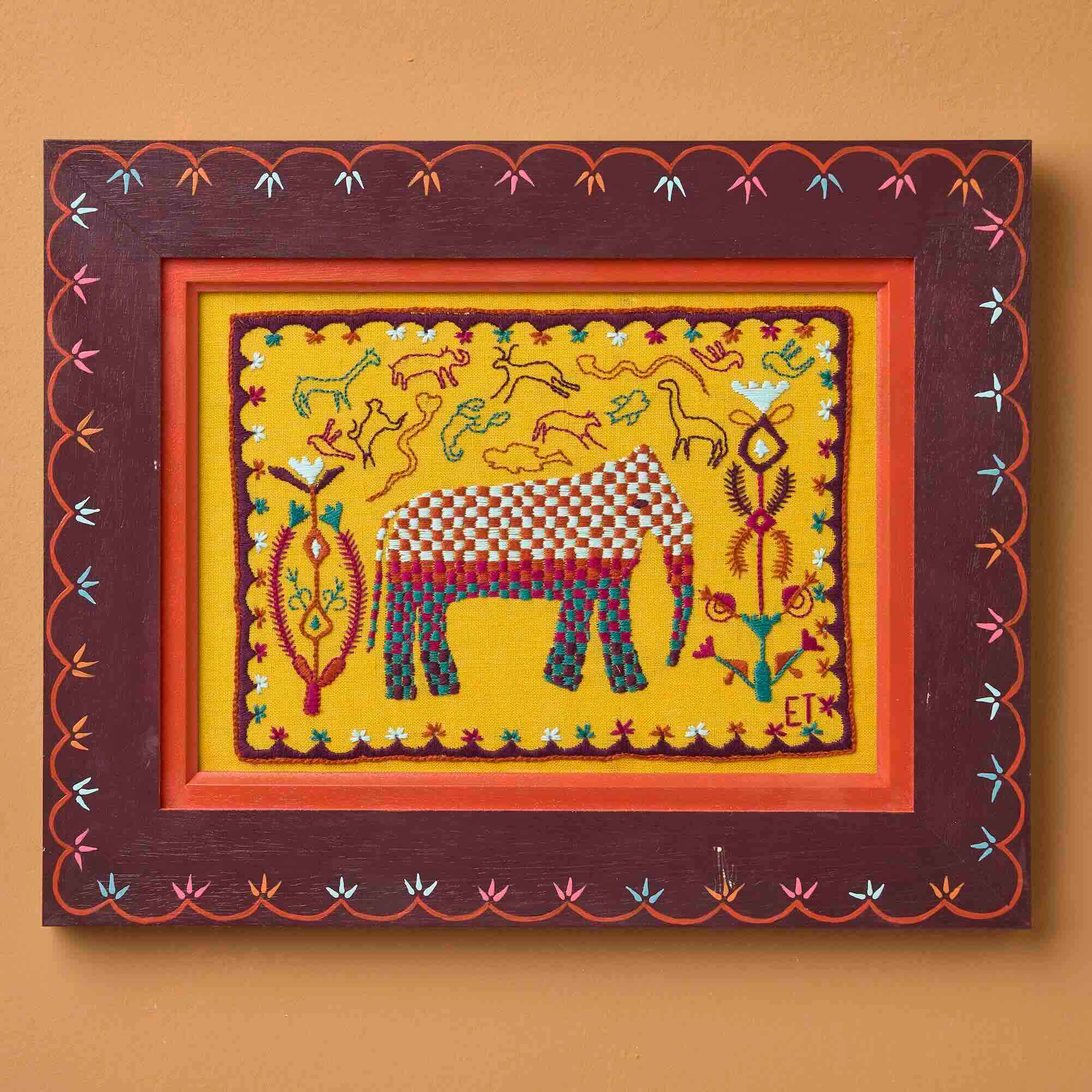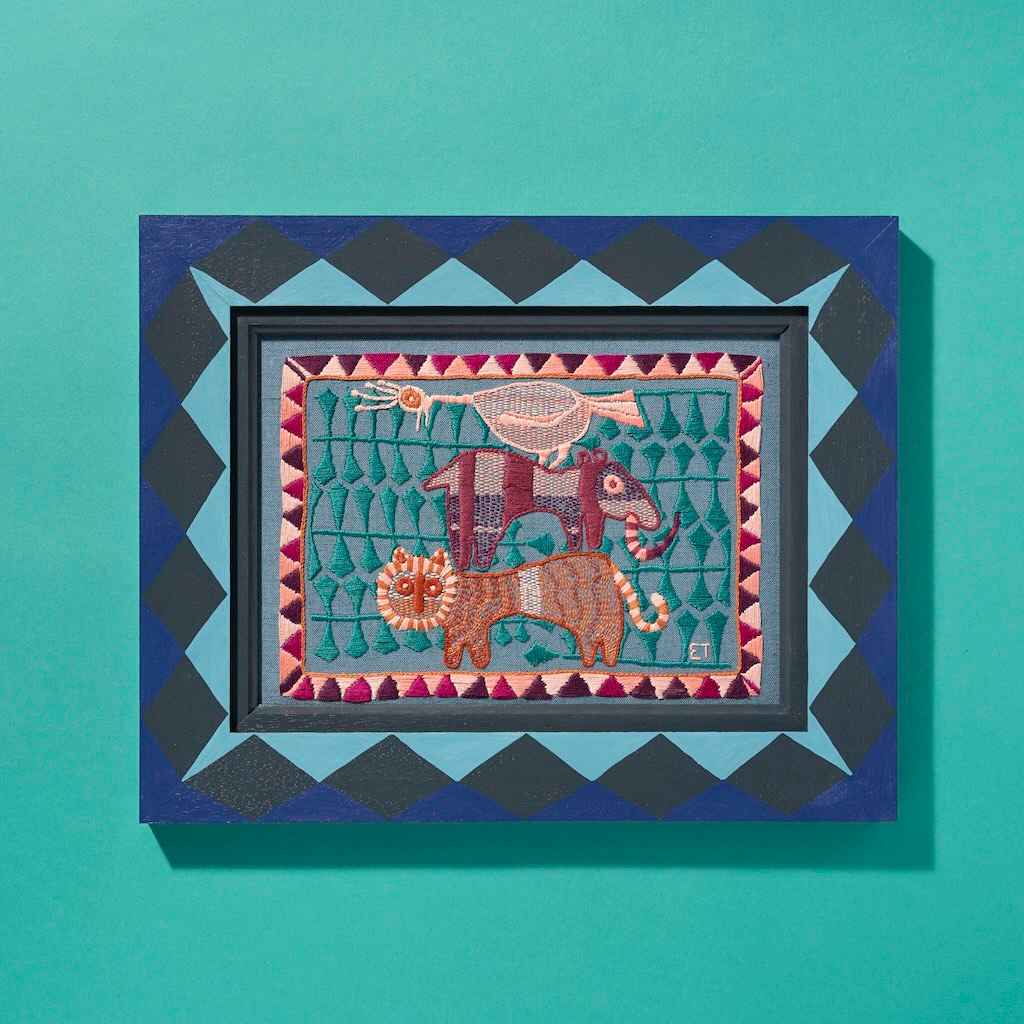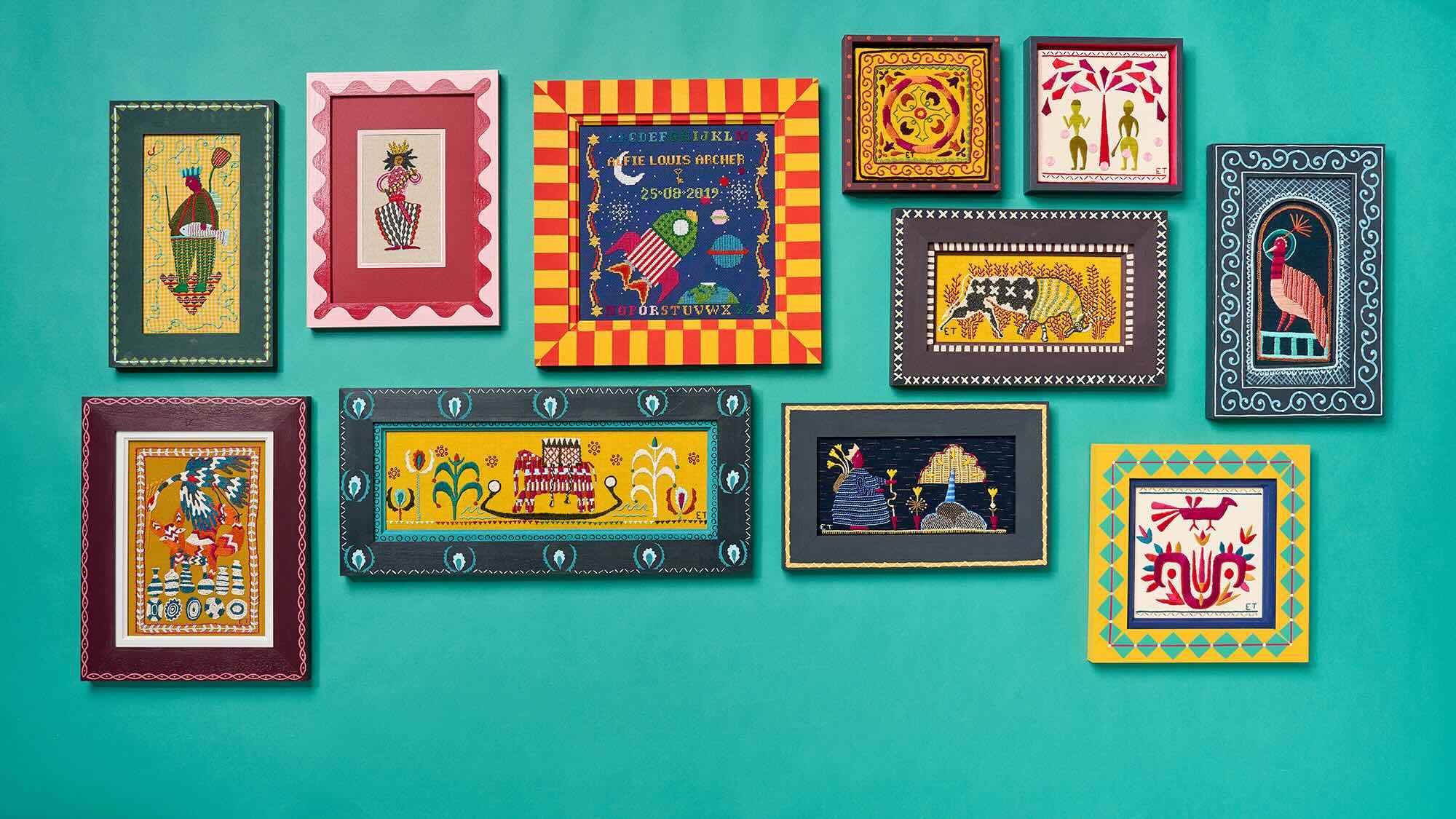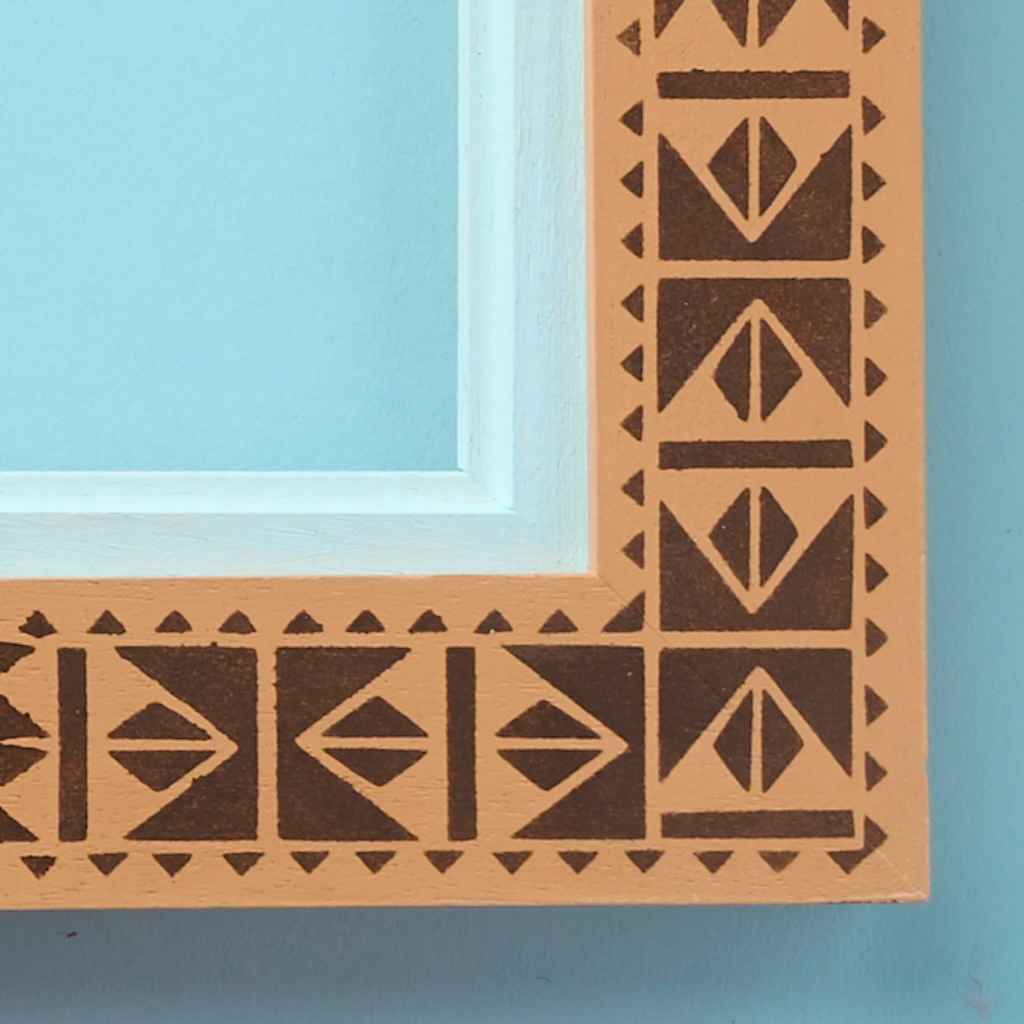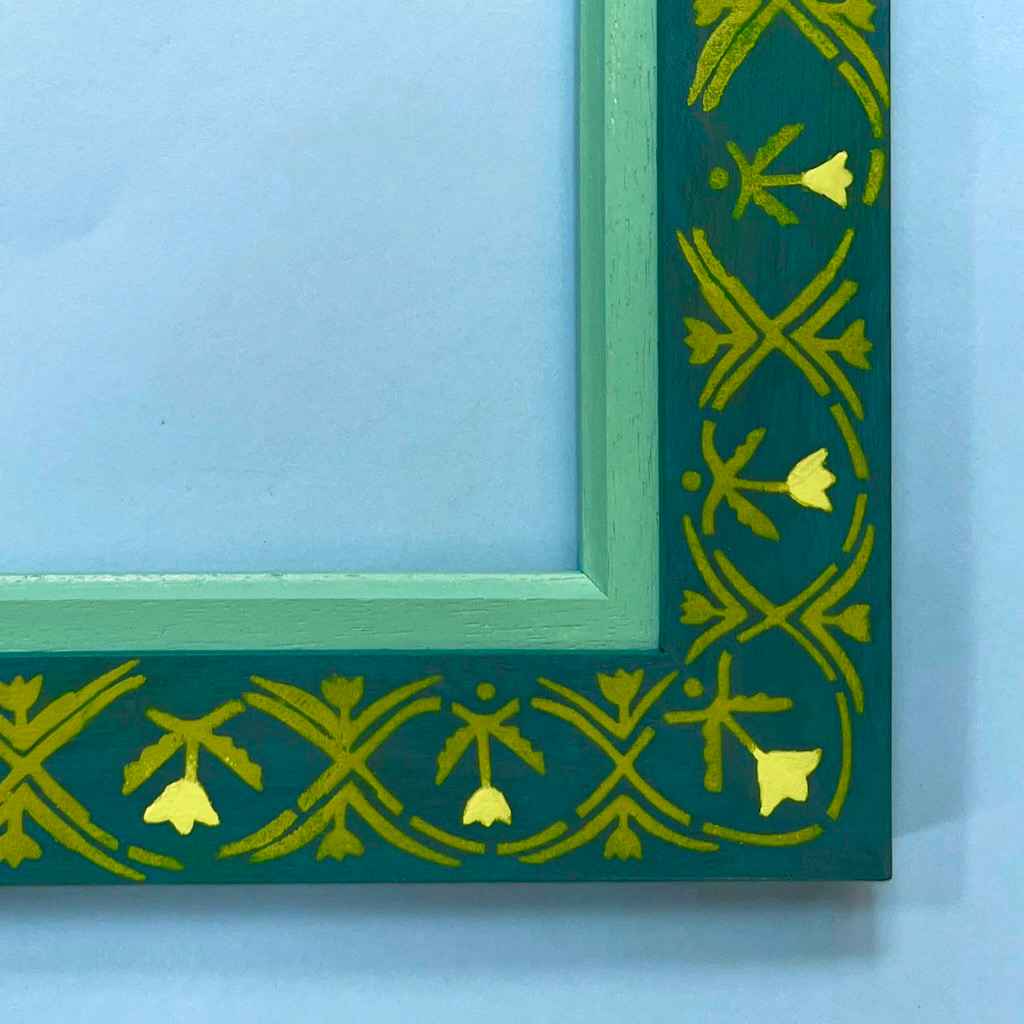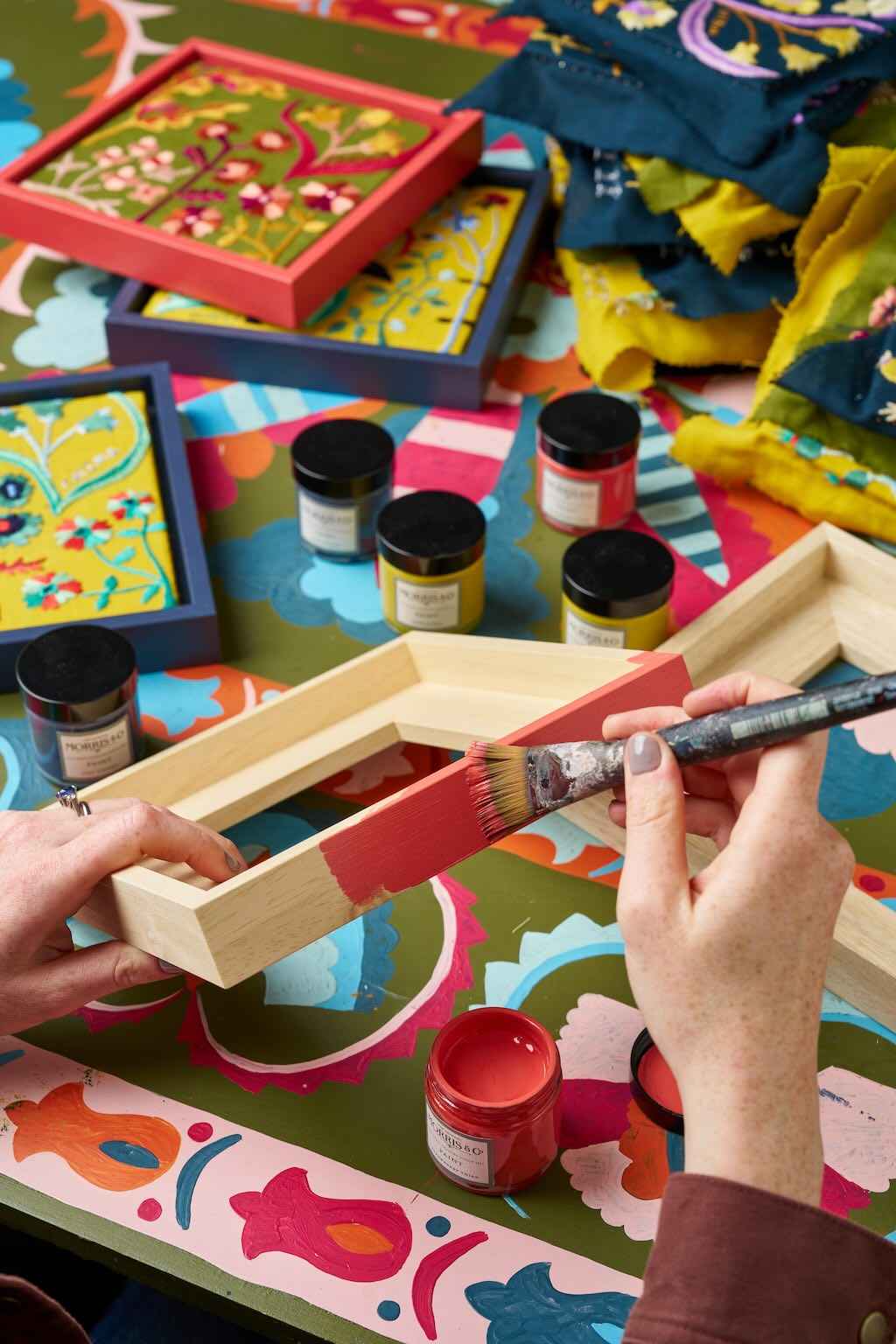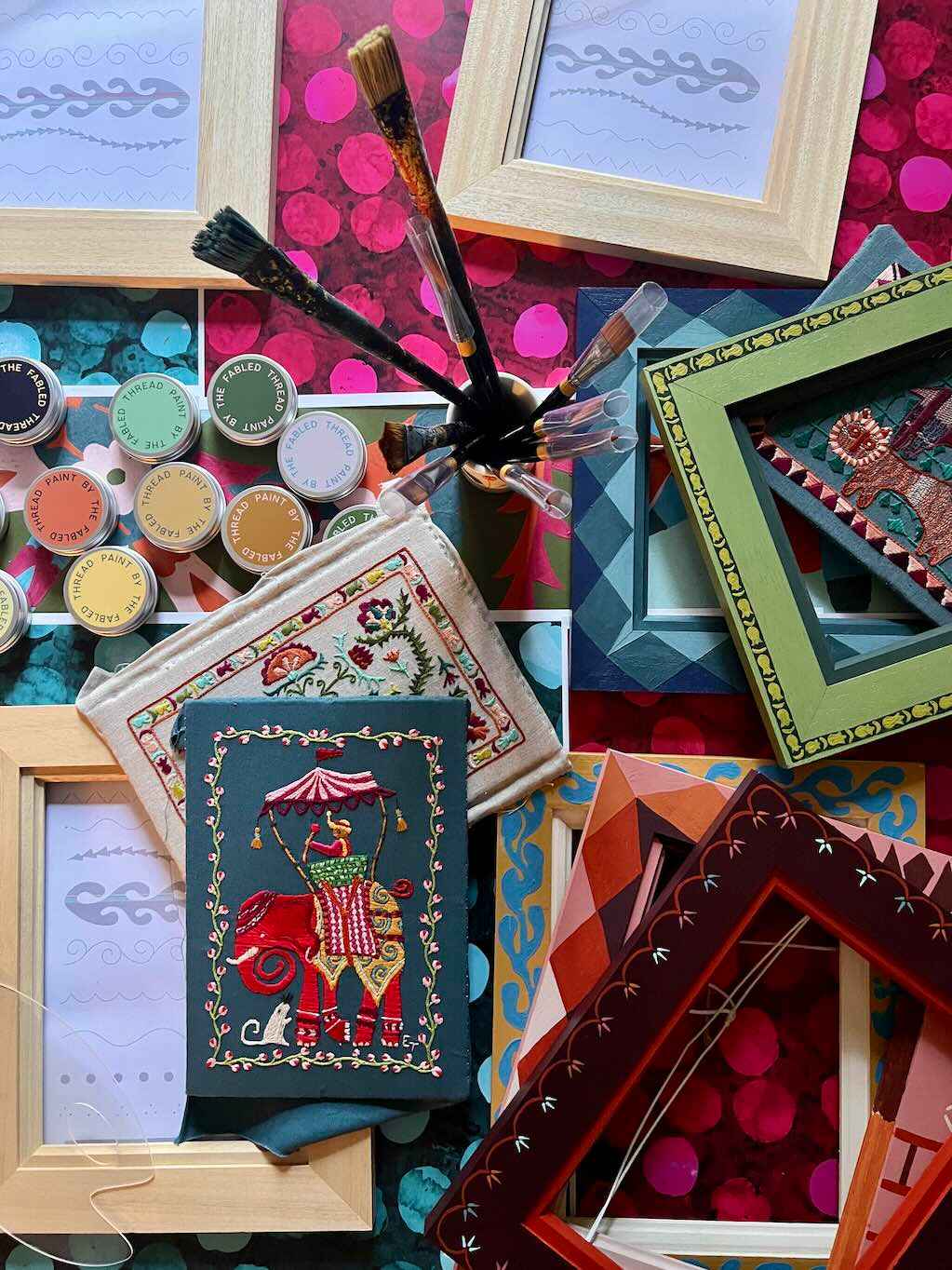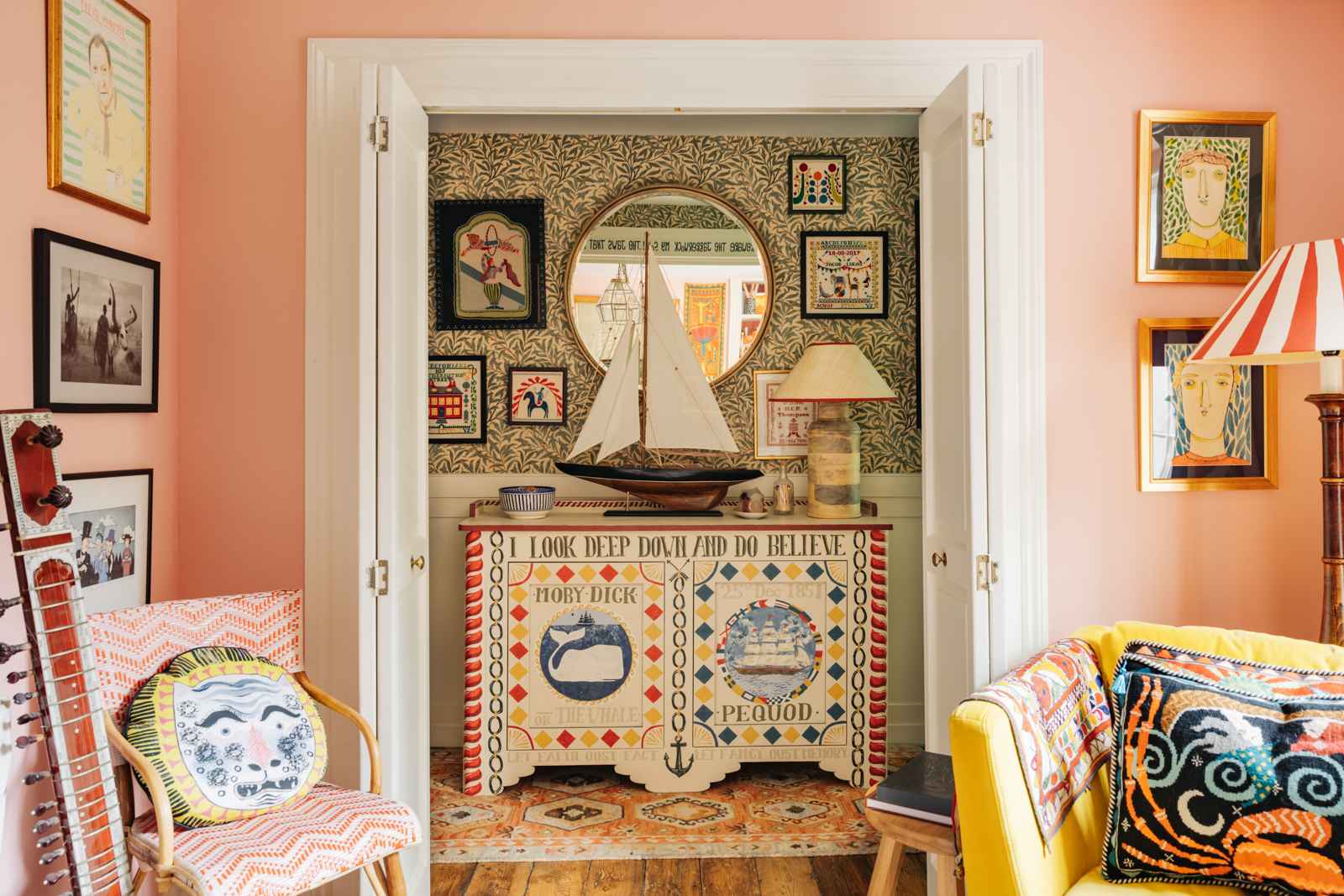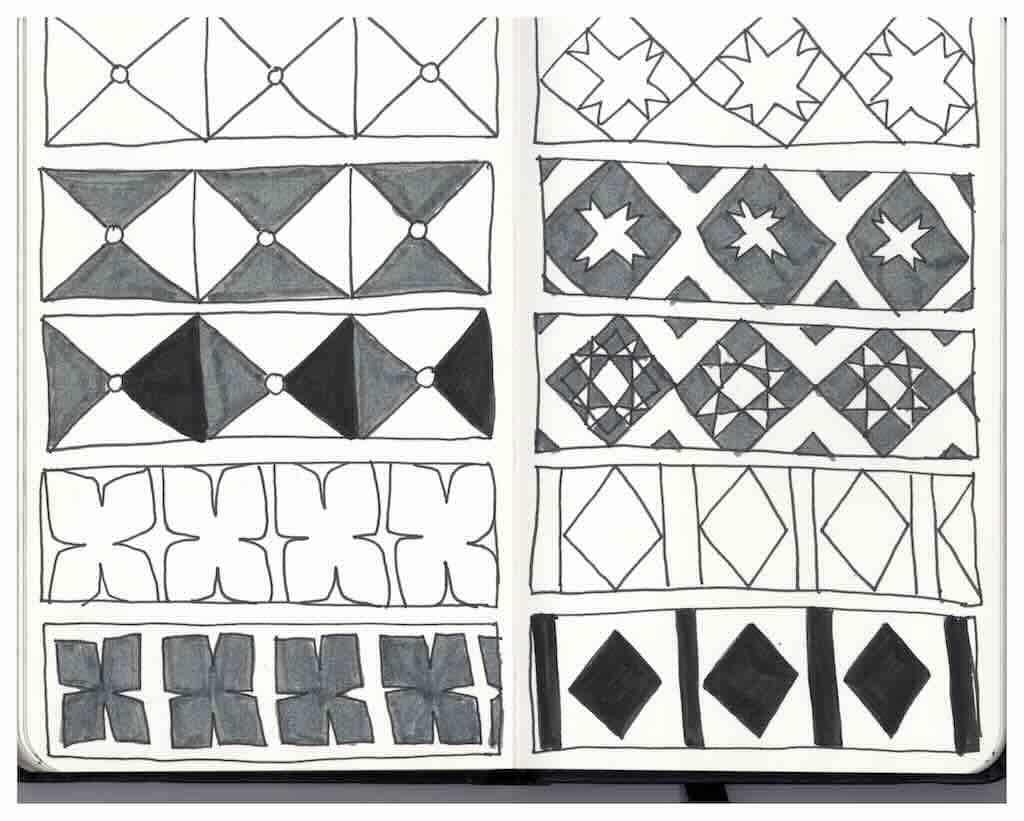Ten Tips for Decoratively Painting Your Frame
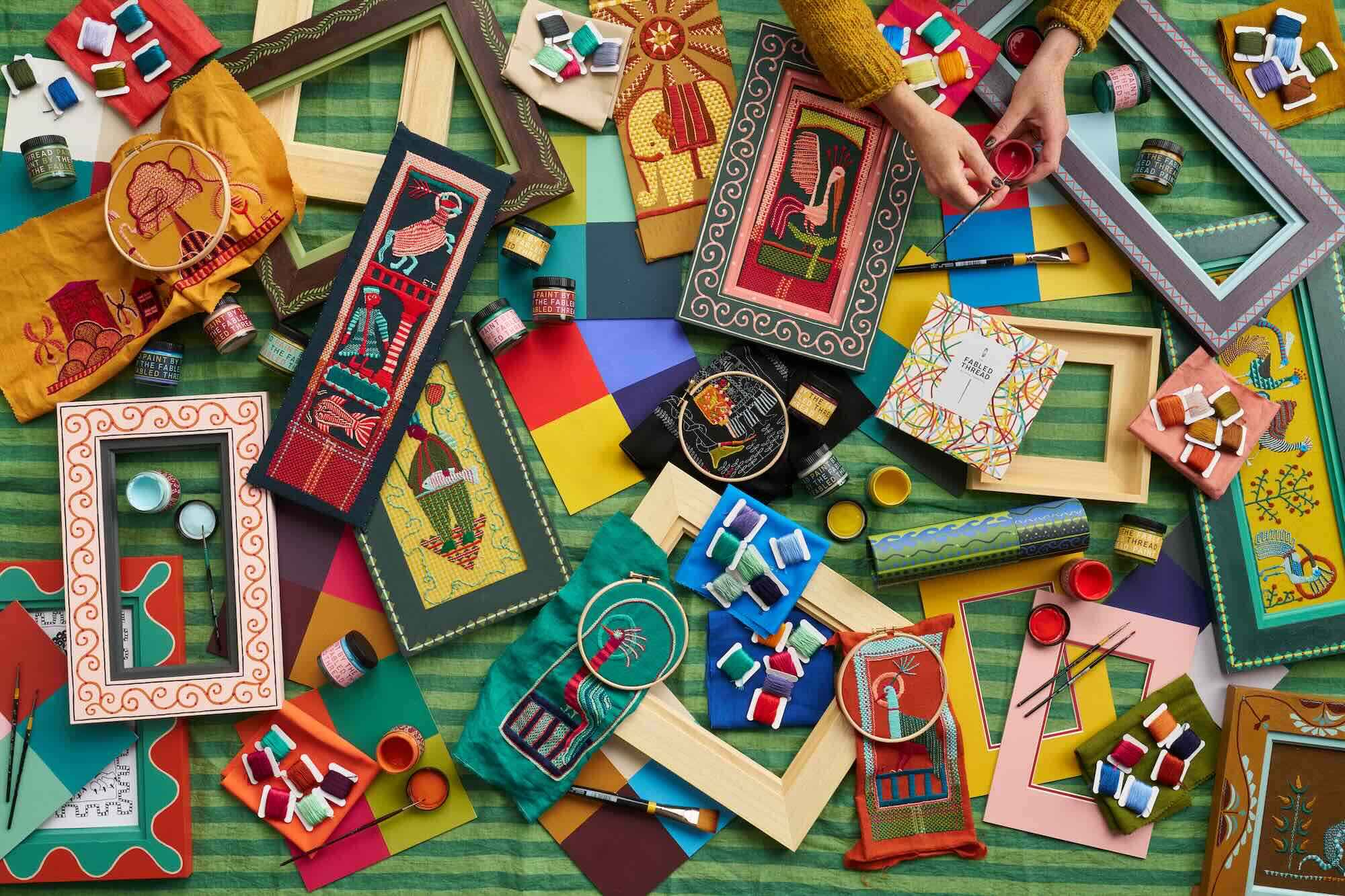
As an embroidery kit company, our aim has always been to encourage people to discover their creative side. We believe that once you've spent hours carefully stitching, your finished piece deserves to be celebrated, and the best way to do that is by hanging it proudly on your wall. Framing adds the finishing touch to an embroidery, elevating it into a piece of art and allowing it to last for generations. But frames can be more than just plain squares of wood or plastic - they can become part of the art itself.
During the Italian renaissance, many artworks had incredibly elaborate gilded frames, with motifs or patterned borders. Religious artworks were placed in altar-like frames, or decorated golden ones, designed to encourage reverence in the viewer.
The artist Kandinsky also painted some of his frames himself, like the one in his reverse glass painting, below. By taking colours from the painting and adding them as a pattern of dots to his frame, Kandinsky's frame brings the whole piece together, while adding a fun and creative element to the finished piece. Howard Hodgkin also famously incorporated frames into his artwork (we’ve written before about Hodgkin’s incredible colour palettes here). He designed the paintings with the frames in mind, rather than simply adding them as an afterthought.
We encourage a similar approach when you come to painting your own frame for your embroidery, so that your unique, decorated frame is a true extension of your final piece.


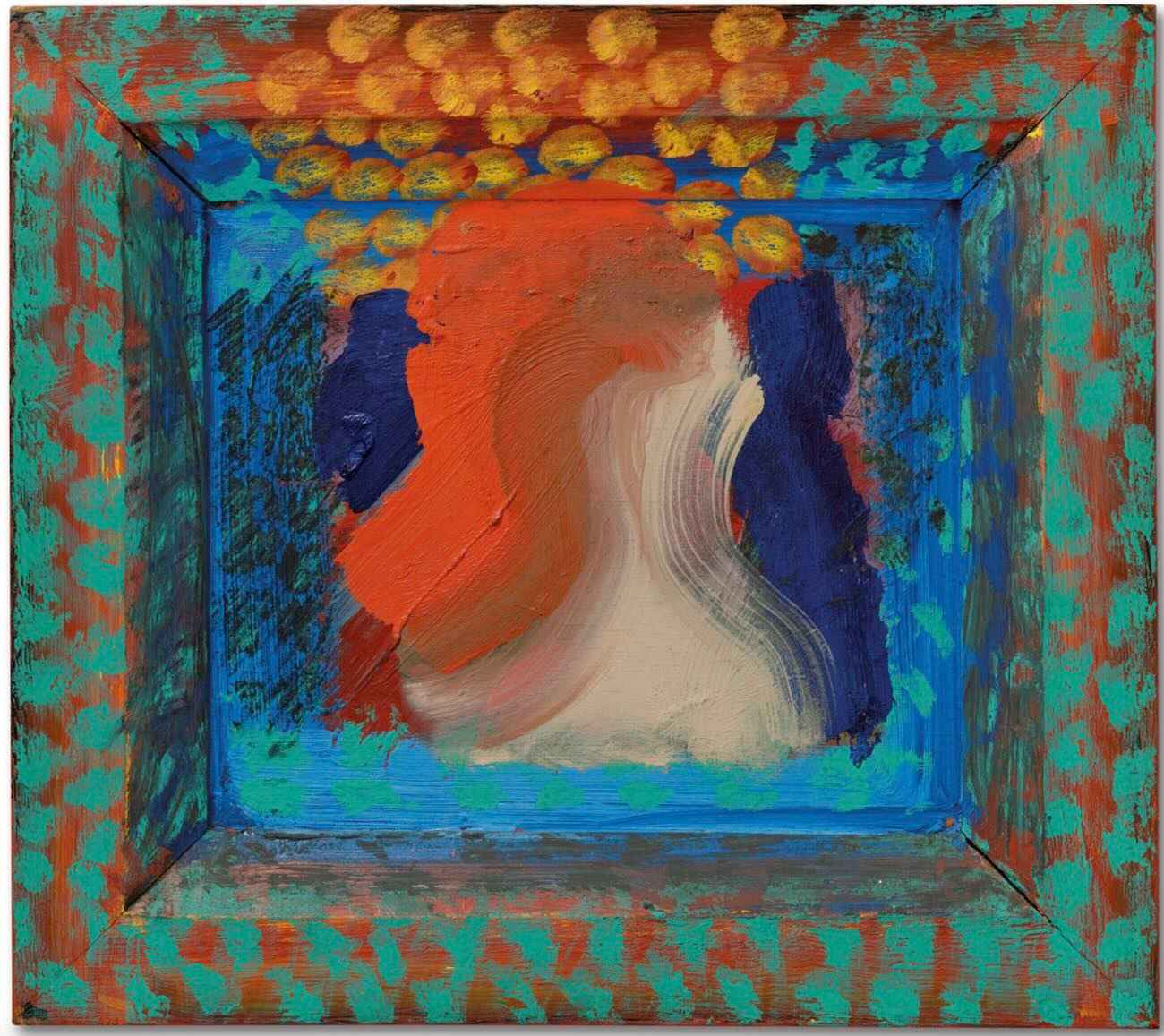
Even though we sell embroidery kits, our ultimate aim is to get you creating your own designs, including your very own painted frame to bring your finished piece together. We're aware that many of you will feel more comfortable with a needle and thread than paintbrush and paint, so we wanted to give you some guidance to ease you through the process of decoratively painting your own frame. Whether you've bought one of our raw unpainted frames or are looking to decorate a frame you already have, this article will take you through our top tips for painting your frames.
We do have a decorative framing course, which covers everything from explaining the materials you'll need and choosing your frame shape, to tips on using stencils and painting motifs. But if you just want a little introduction, then hopefully this article will help make decorative frame painting feel much less daunting!

Before we get into it, whilst you can use any frame for painting, we do stock a range of frames to the sizes designed to fit our embroideries. These frames are in a raw obeche wood which is the perfect wood for decorative painting - they absorb the paint beautifully which retaining some wood grain.
The first step when decorating your unpainted frame is choosing your paint colours. We always recommend picking colours that are already within the piece of art that you want to frame. For example, if your piece has a yellow background like the embroidery below, you might decide to pick out a more minor colour from within the embroidery, like the brown from the border and the elephant’s legs. When this brown makes up the main colour of the frame, with finer details from the other colours in the piece, it has the effect of really drawing your eye to the embroidery. If you want a colour in your embroidery to really pop, you could leave it out of your frame entirely, like the pinks in the Lion, the Boar and the Vulture example below.
If you're painting a wooden frame like the ones that we stock, you can use any water-based paint, like emulsion or acrylic. We would advise against using oil paints since they take a long time to dry, make it harder to correct mistakes, and require more materials for cleaning your brushes. If you prefer a matte finish, then chalk paints are a good option, otherwise acrylic offers a glossy sheen to your frame.
The paints that we stock are water-based emulsion paints, which we sell in small pots, perfectly sized for covering your frames without leaving with tons of unused paint at the end. We sell these in bundles of four, in carefully curated colour palettes.
We recommend use the colours directly from the paint pots rather than mixing your own colours, just to take that extra stress out of the painting process. However by all means, feel free to mix your own colours!
Once you’ve chosen your colours, it’s time to plan out your design. Similarly to the colour process, we recommend picking a motif or pattern from within your embroidery to make your frame and embroidery feel really cohesive. This could be a motif you’ve used as a border in your embroidery, a decorative detail in your background, or a pattern within one of your main shapes or characters. Or, if you really want the frame to stand out and draw your eye, you could pick a motif that isn’t already included in your piece.
We would still recommend sticking to the general theme of your piece though - for example, if your embroidery or artwork doesn’t have any harsh lines or angles, we’d avoid choosing geometric motifs for your frame. Equally, if your embroidery if quite bold and geometric, loose and flowing motifs may not be the most effective framing choice. Try and draw a few designs out first and hold them against your embroidery to check if the motif goes with your finished piece.



Your design doesn't have to be complicated at all - in fact, it's better not to overcomplicate. Simple designs can look really effective, like the line and dot combination that Eppie teaches her granny to do in the video below.
If you’re feeling a little lost about where to start when you come to designing your own motifs, we have two articles on our journal all about looking up and finding inspiration from the world around you (here, and here). These have tons of great images of motifs, but of course the ultimate aim is to inspire you to get out and find your own. This article for our studio members breaks down the process of turning things you see into motif designs.
If designing your own motifs feels like a stretch too far at this point, you can always use stencils! We have a range of stencils available to help you, which include pieces to help you manoeuvre those tricky corners.
Now that you’ve chosen your paint colours and motifs, you’re ready to get framing! Firstly, you’ll have to mount your embroidery. Every framing kit we sell includes a mount kit with all the instructions you’ll need, but you can also watch the mounting process here. We’ve designed this to be smooth and easy, helping you to create your beautifully stretched and crease-free embroidery in a quick and easy way.
Once your final piece is mounted, it will sit easily within your frame - just don’t place it in your frame before you start painting, or you’ll get paint on it!
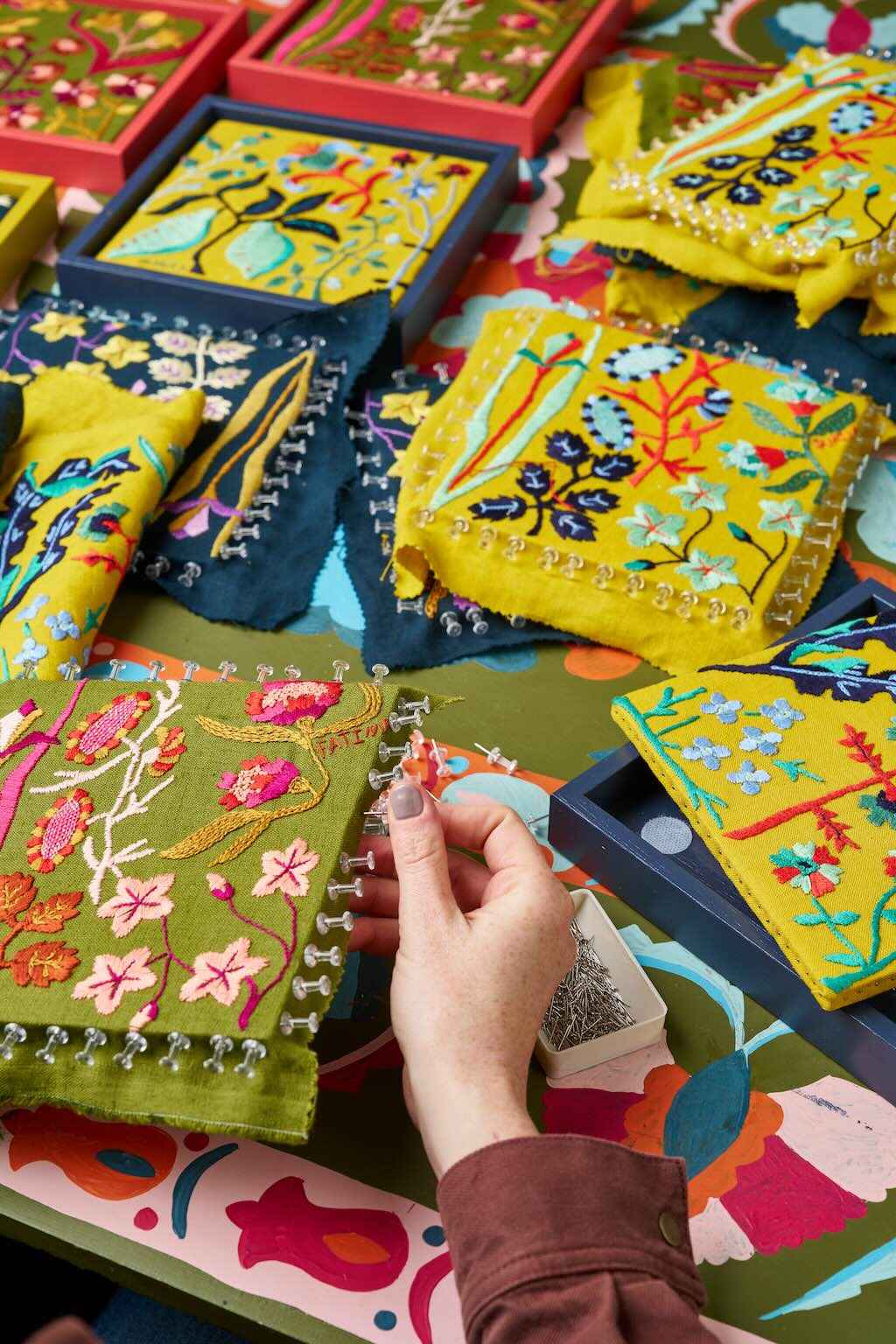
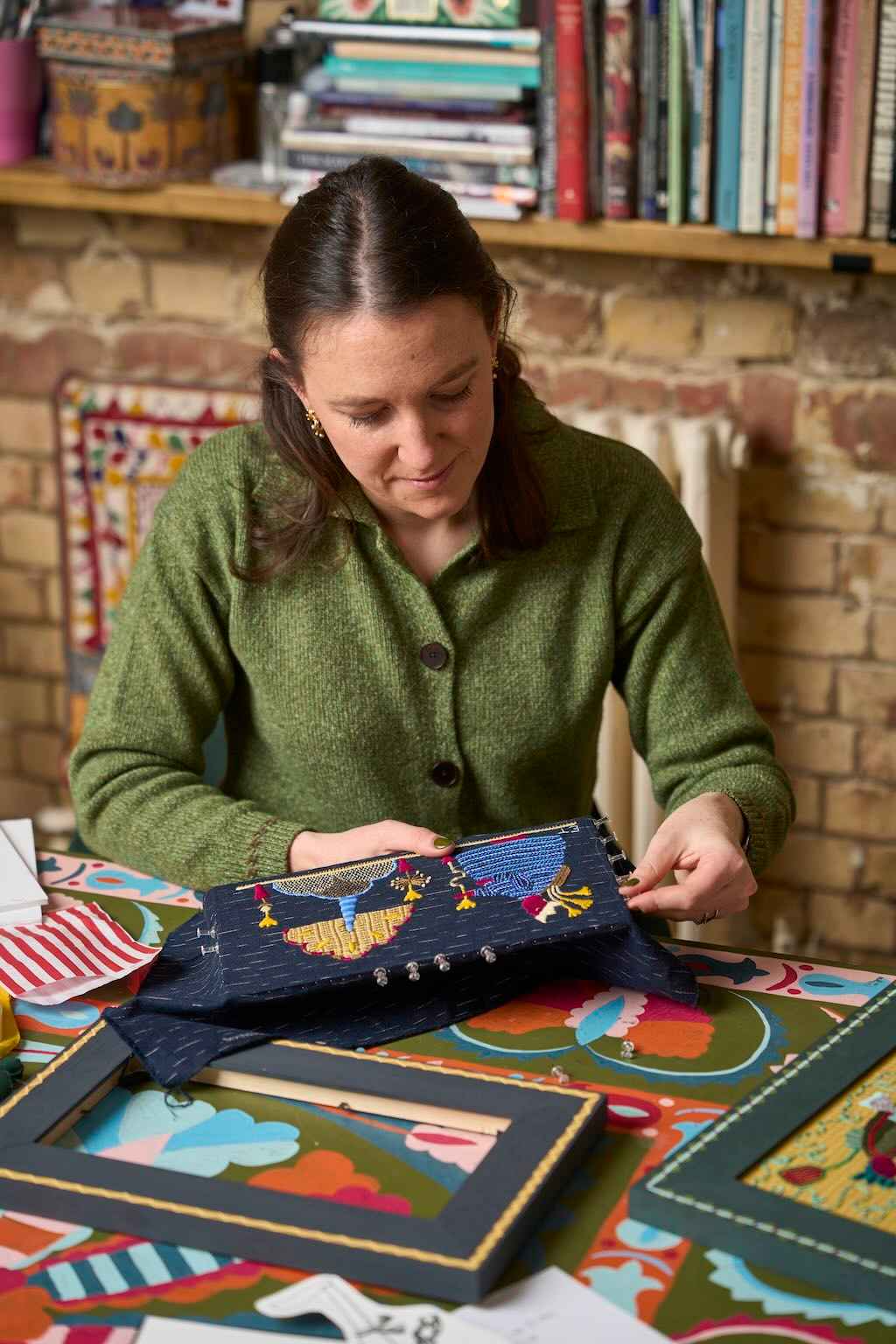
To begin with, apply a base coat. If using our water-based chalk paints, you won’t need to mix them with water, you can simply dip a large brush into your chosen colour and begin painting the raw frame. Once you’ve painted your base coat and allowed it to dry, we recommend applying a layer of varnish. This will mean that if you make any mistakes when you come to painting your motifs, you’ll be able to easily wipe them away without the need to re-paint your base coat. You can use baby wipes to do this.
Don't worry if it goes wrong or if you decide that something isn't quite working - you can always paint over your first try and give it another go. Here's a video of Eppie doing exactly that, taking you through the process of what to do when your frame painting doesn't quite go to plan. Hopefully this will reassure you that it can happen to all of us, and that it's completely fine if you aren't happy with your first try!
Before getting started on painting your motifs, it helps to sketch them very lightly on top of your base coat, so that you have a guide to follow. This is especially useful for making sure that the motifs or patterns are even each side and that they go around the corners of your frame. Once you’ve done this, all that’s left is for you to get painting!
To help you through this, we’ve asked Izzy, our frame painter, to give you a list of her top tips and tricks for decoratively painting your own frames.
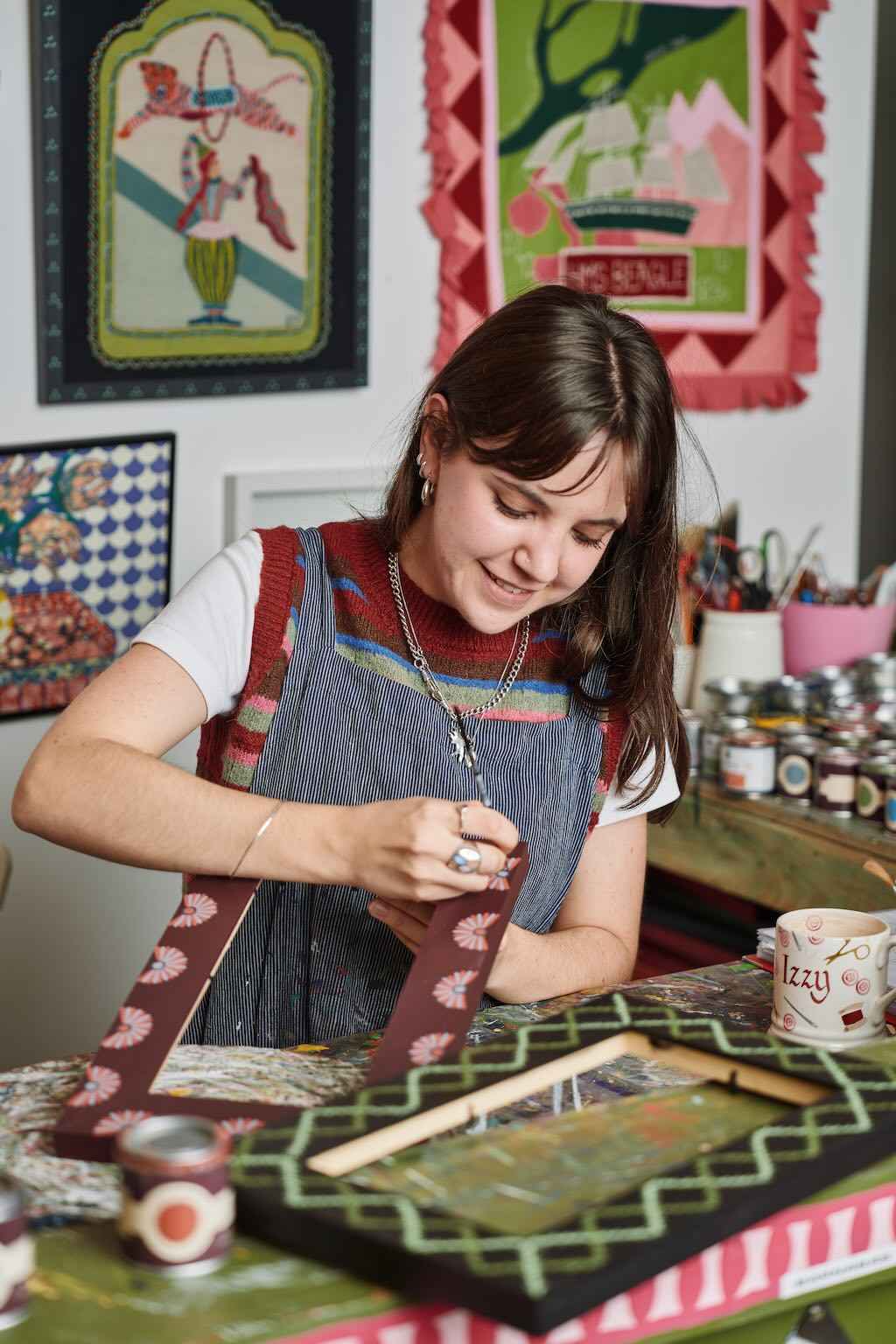
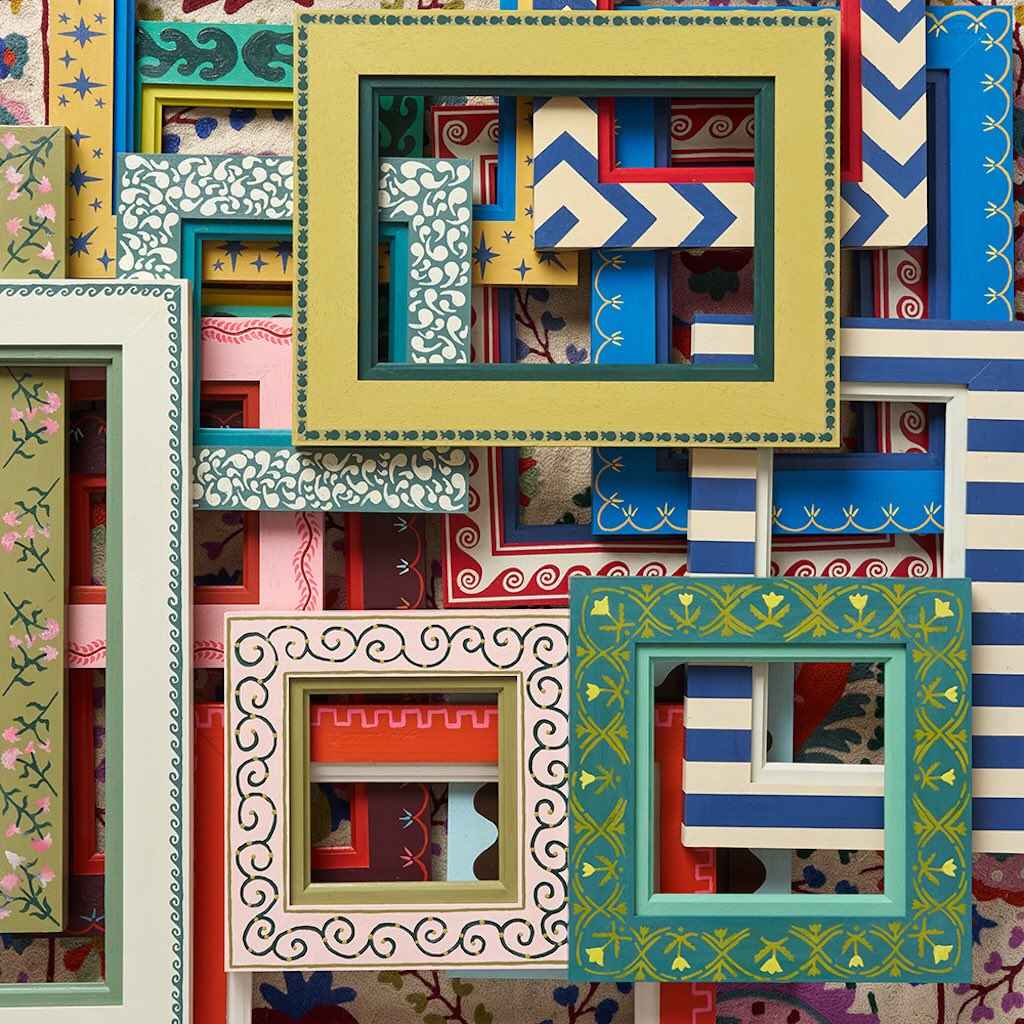
- When doing the base coat, paint the entire inner edge first, so that you always have an edge to hold onto.
- Don’t apply base coats too thickly - multiple thin layers are better.
- Remember that the frame should complement the embroidery, not overpower it.
- Varnish the base coat before you decorate - this helps with layering.
- Simple motifs are often more effective than complex ones.
- When adding motifs, start from the corner so you know how the design will work around the bend.
- Sketch your design lightly with a very small amount of paint and a fine brush rather than going straight in with thick final designs. This helps you to see how the whole design will work across the frame.
- Use tape for clean, straight edges, particularly for geometric shapes.
- Avoid making your colour arrangement too repetitive - variation adds interest.
- For small, uniform dots use the other end of your paintbrush.
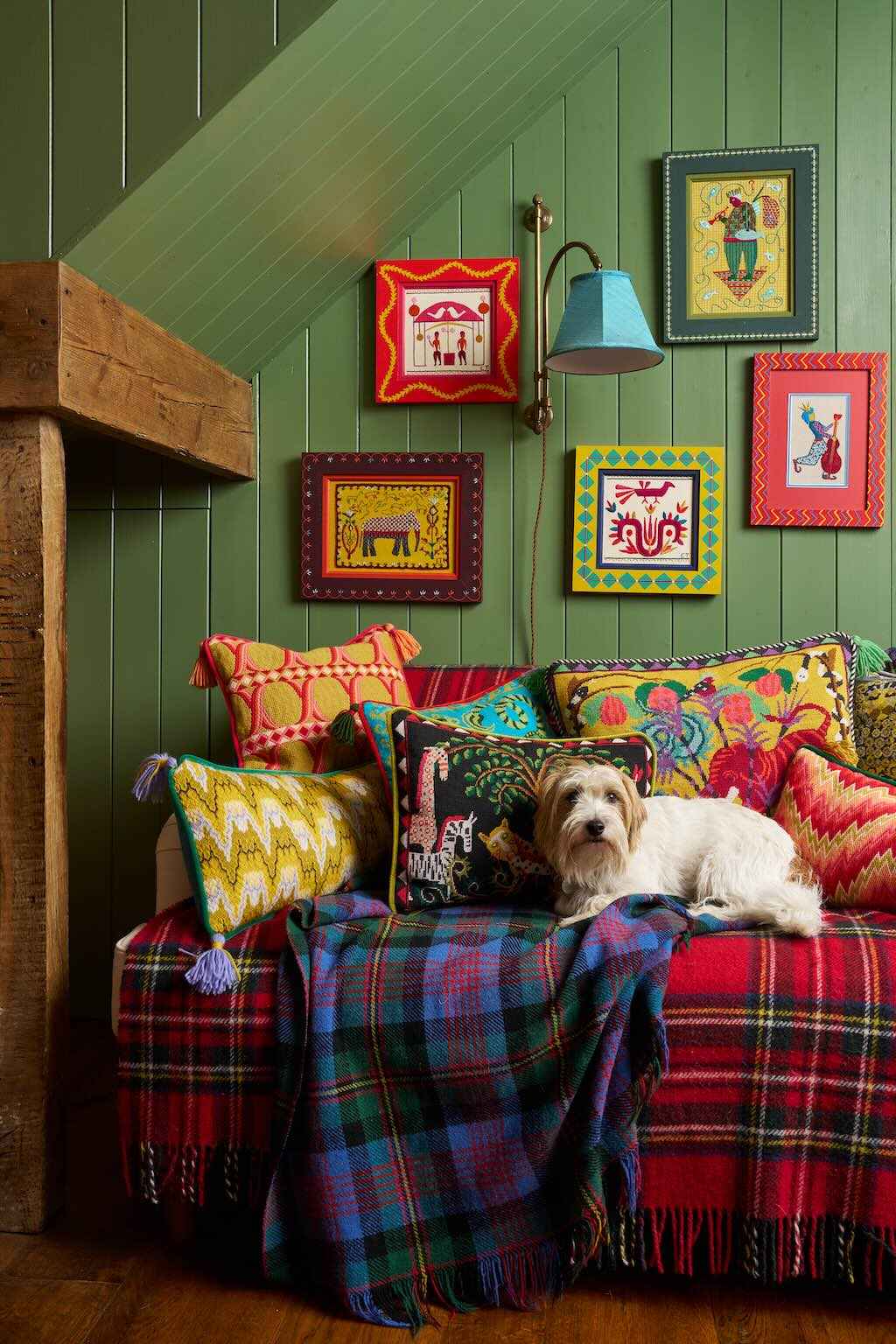
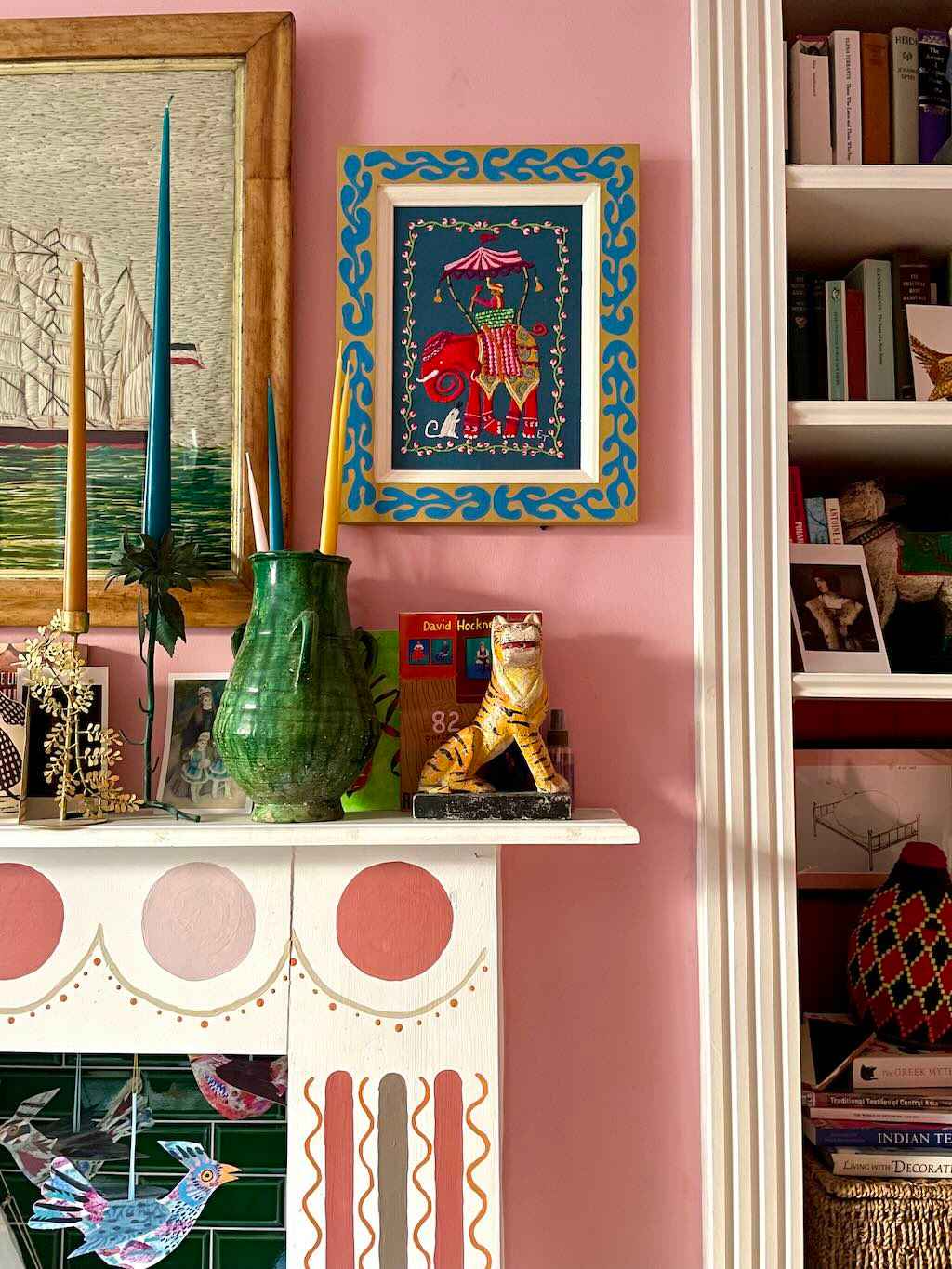
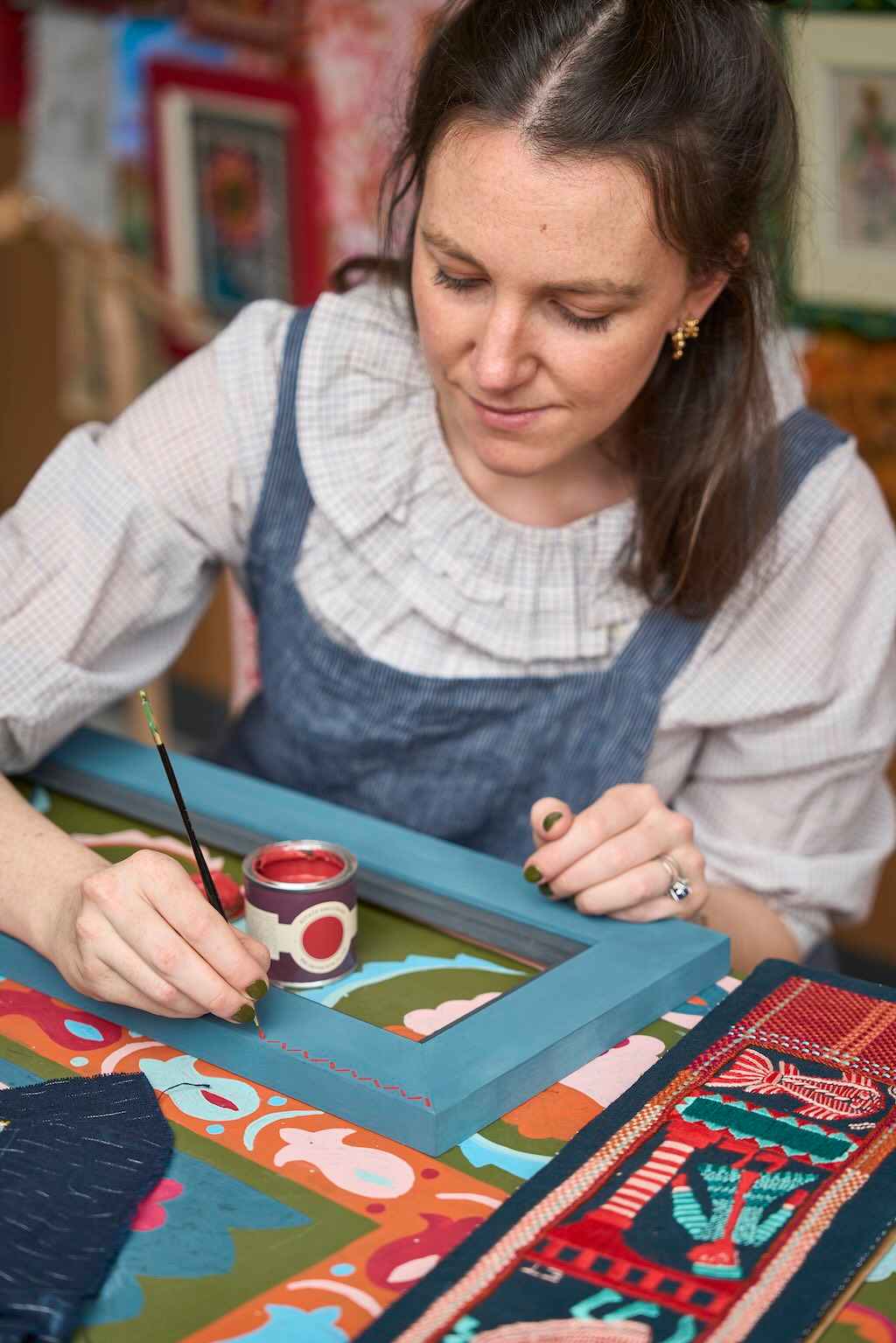
We hope this article has helped make decorative framing feel less intimidating, and hopefully you now can't wait to get started decoratively painting your own frames!
If this sounds a bit much for now, you can stick to our own range of hand-painted frames, which we've designed to complement each individual kit. Just know that if you ever want to venture into decorating your own frames, we're here to guide you through each step!








